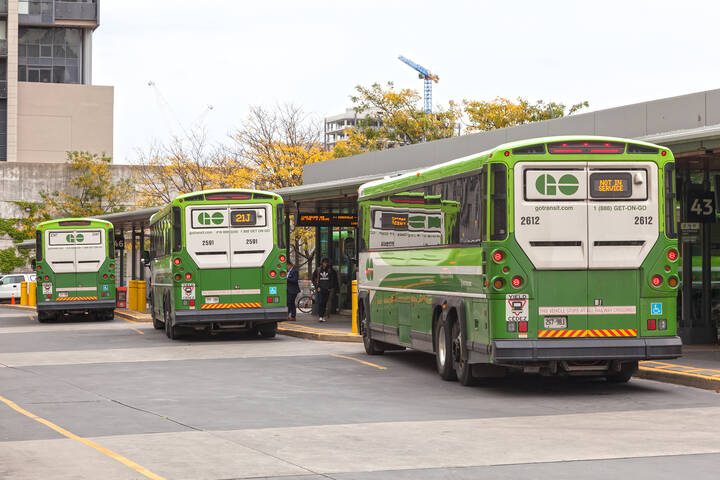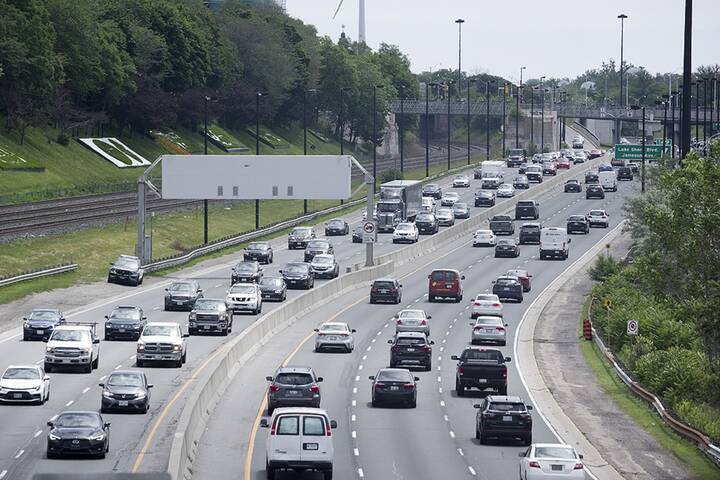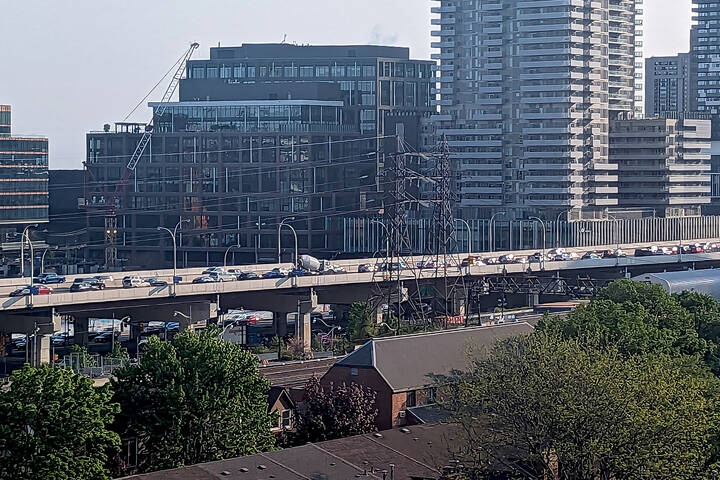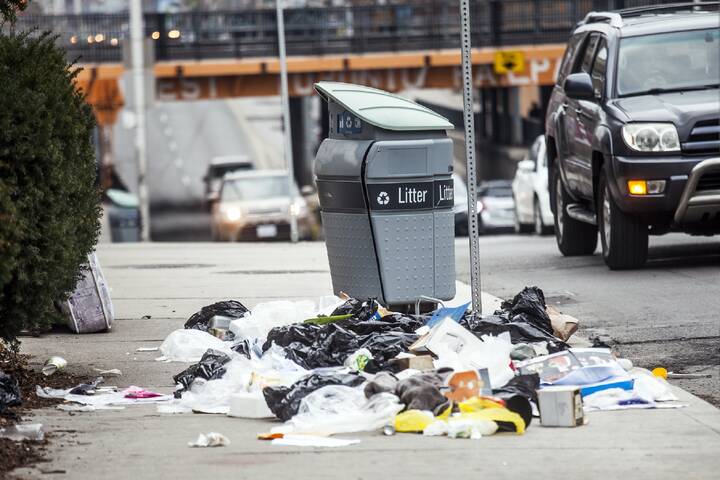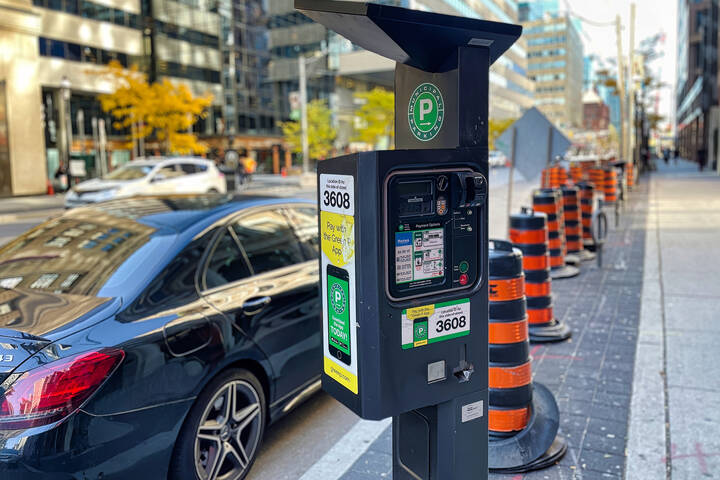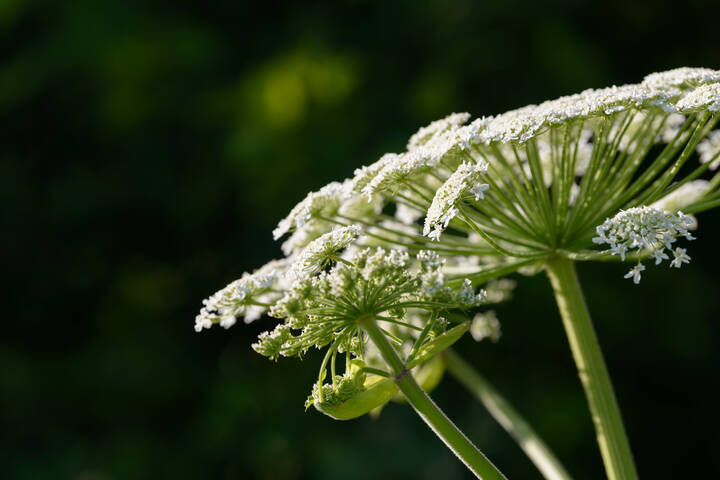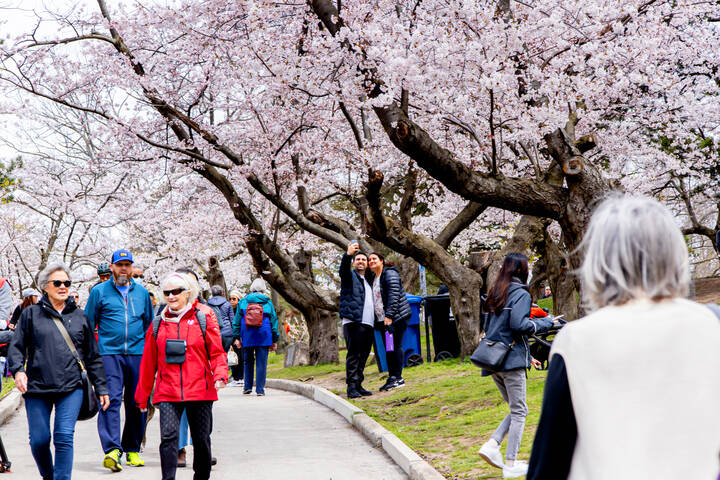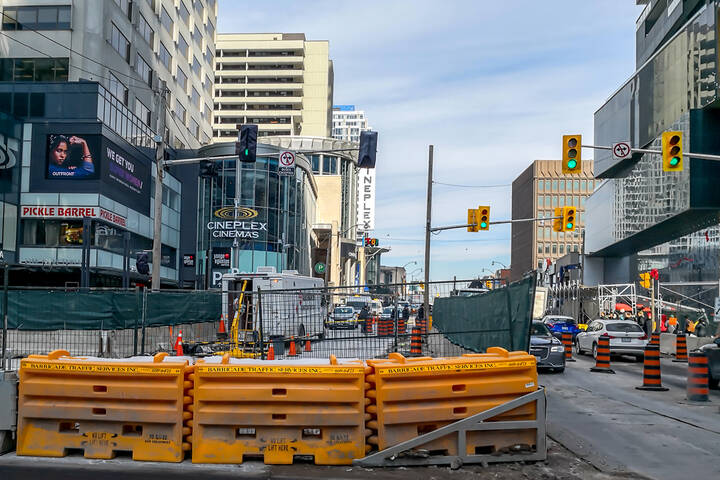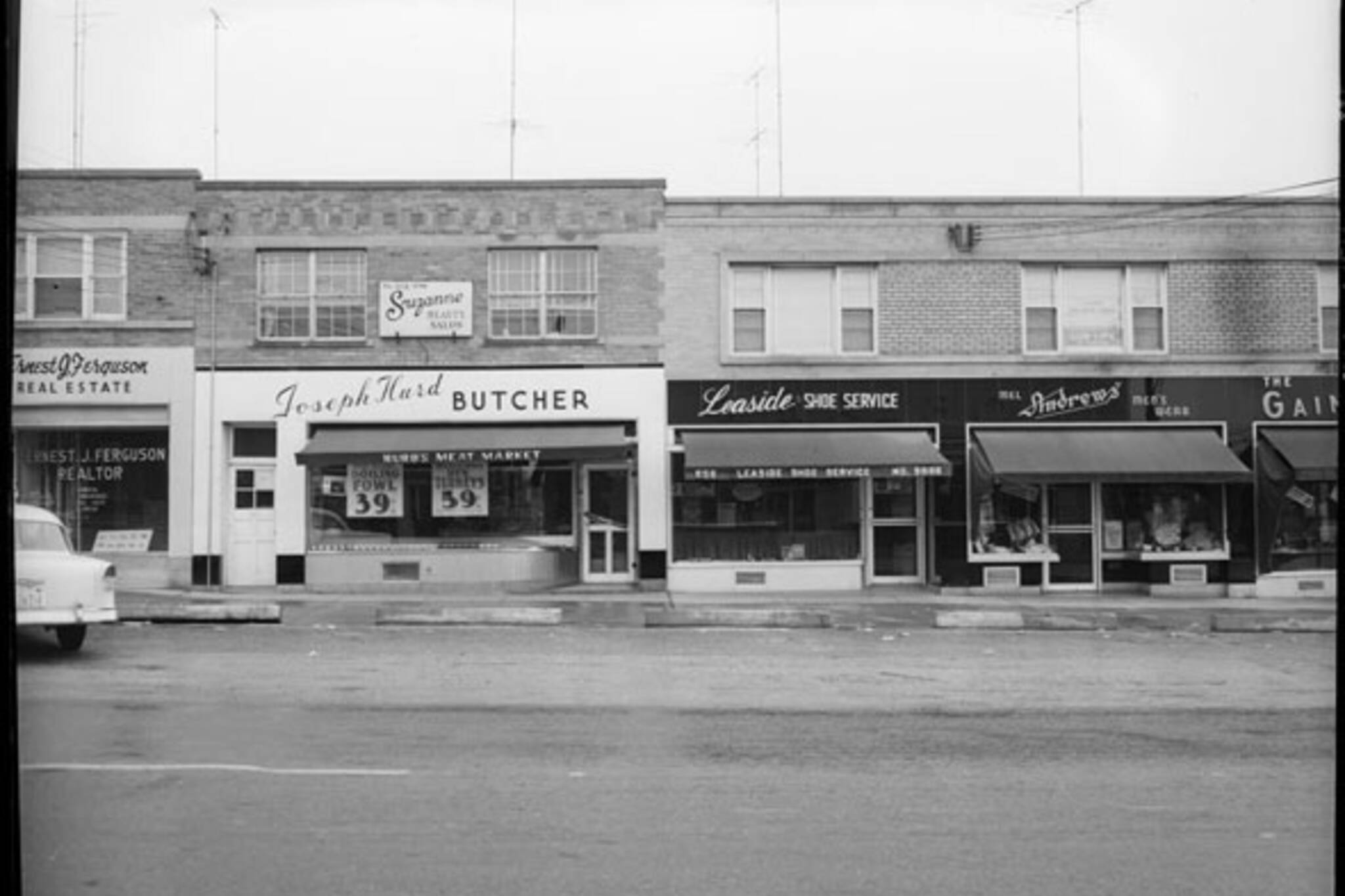
What Leaside used to look like in Toronto
Leaside is Toronto's railway town, or at least one of them. Starting around 1912, Canadian Northern Railway began buying up large tracts of land in the area east of Yonge, north of the Don Valley, with a view to creating planned community in the mould of its successful Port Mann and Mount Royal Park towns in British Columbia and Quebec.
Noted Montreal-based landscape architect Frederick Todd was commissioned to produce the master blueprint that would dictate the location of houses, roads, and commercial areas.
Many of Leaside's streets were named after Canadian Northern executives, including Hanna, Wicksteed, and Laird. The town, which takes its name from early settler William Lea, was officially incorporated in 1913 and many of the current homes west of Laird, south of Eglinton, were built after 1924.
Heavy industry has also historically been a major presence in the Leaside area. During both world wars, Canada Wire and Cable produced shells and other important munitions at its sprawling plant southeast of Wicksteed and Laird. It's gone now, replaced by a shopping plaza, but the surrounding area remains a dense thicket of factories.
Here's a look back at what Leaside used to look like.
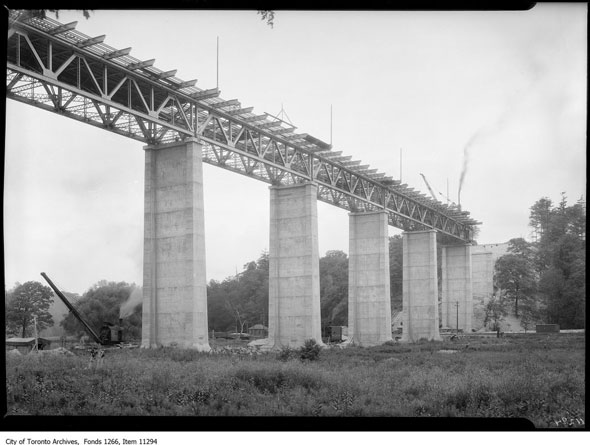
The Leaside Viaduct that carries Millwood over the Don Valley. Built in 1927 in just 10 months, the $150,000 bridge drastically improved access to the relatively isolated community. Unfortunately, the impressive structure, which has since been widened to accommodate more road vehicles, tends to be overlooked in favour of its more famous cousin to the south, the Prince Edward Viaduct.
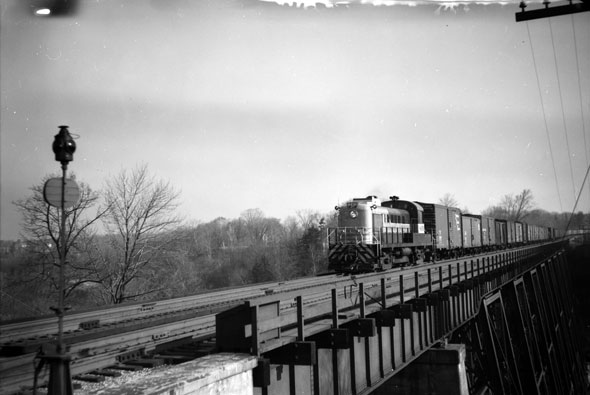
The old Canadian Pacific bridge over the Don River near today's Evergreen Brick Works. The original trestle was replaced section-by-section with the current bridge in 1928 without once interrupting rail traffic.
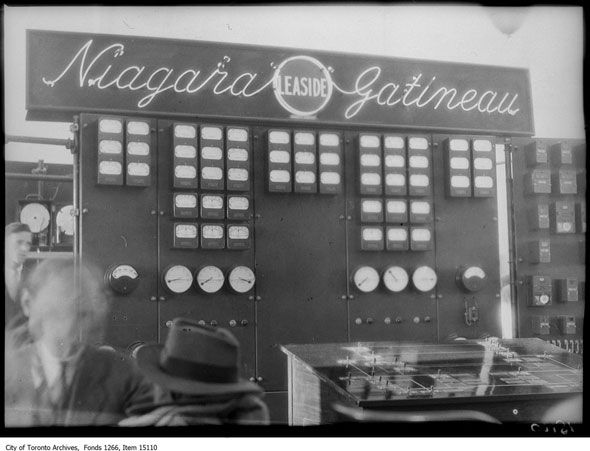
Starting in 1926, Toronto began receiving its some of its hydro electricity from Gatineau, Quebec. A 370-kilometre transmission line from a generating station on the Ottawa River--the longest ever built in Canada at the time--fed power into the grid by way of a transformer station in Leaside. The service was inaugurated by Premier Howard Ferguson on October 1, 1928.
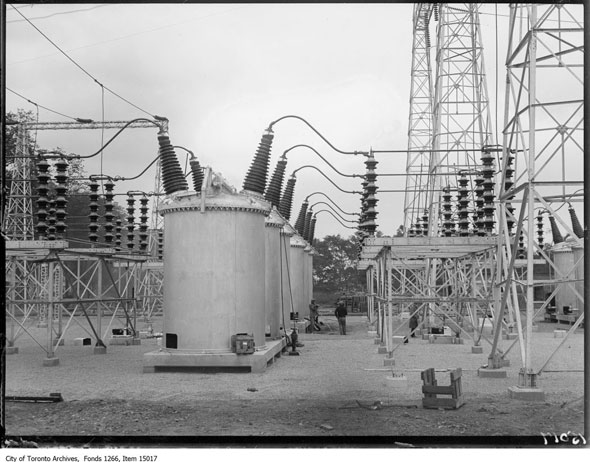
The massive outdoor electrical equipment at the Leaside Transformer Station in 1928. Much of the original Gatineau-to-Toronto infrastructure, including transmission pylons, survived for more than 70 years until the ice storm of 1998, writes Howard Hampton in his book Public Power.
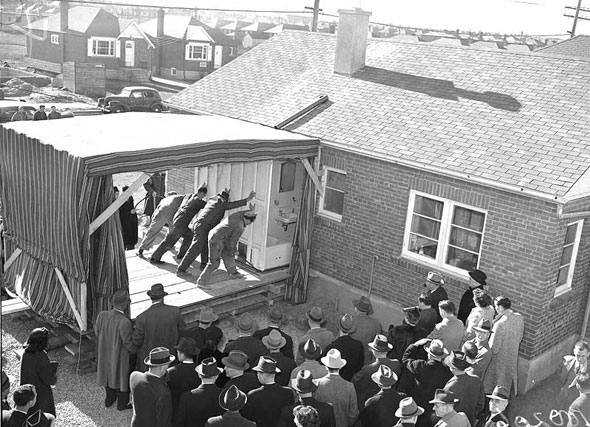
Heavy equipment is pushed inside a hydro house in Leaside. These shell structures, designed to be indistinguishable from regular houses, shield transformers and other unsightly electrical equipment from public view. Many of them are still in use, hiding in plain sight.
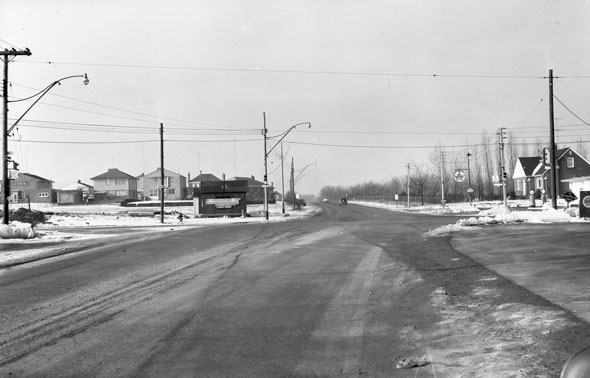
Looking west over Bayview at Moore in 1955 towards Mt. Pleasant Cemetery. The northwest corner, visible on the right of the photo, is still home to a gas station today.
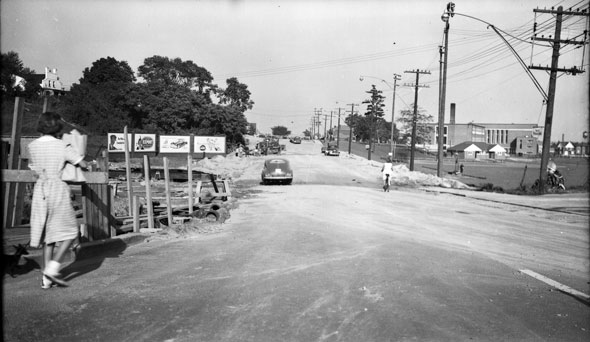
Looking east on Eglinton from just east of Bayview in 1951. That's Howard Talbot Park and Leaside High School on the right. Today, the land on the left is home to strip plaza anchored by a Rexall pharmacy.
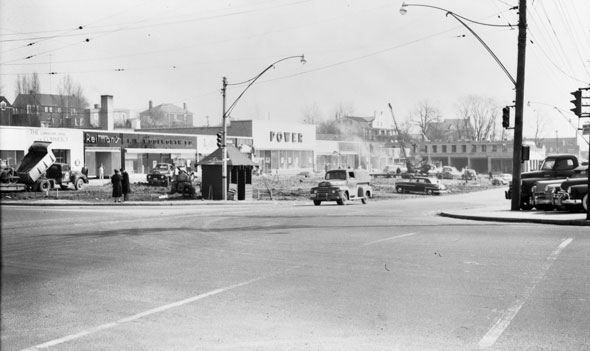
Construction at the northeast corner of Eglinton and Bayview in 1952. The Power supermarket building is still standing--it's the Rexall pharmacy mentioned above in Sunnybrook Plaza. The Reitman's is long gone.
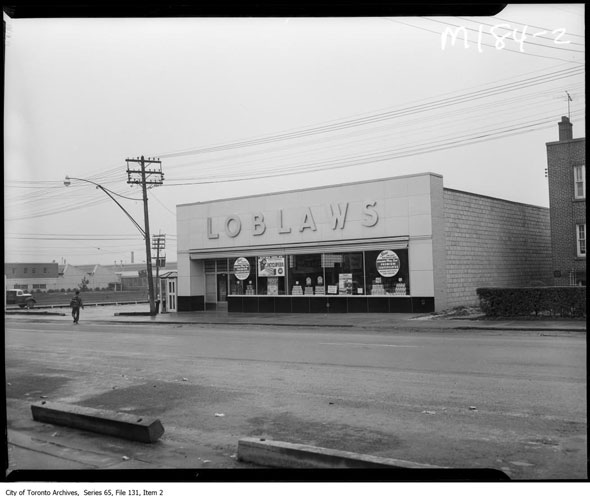
Loblaws on Eglinton at Laird in 1956. The building is still there (I think,) although its exterior has been heavily compromised. A Great Canadian Bagel, Pizza Nova, Mr. Sub, and Second Cup currently use the building.
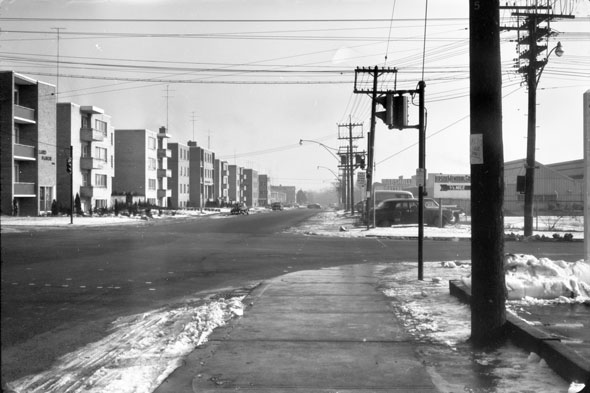
New apartment buildings on the north side of Eglinton, looking east from Laird. "Laird Manor," the name of the building nearest the camera, is still standing.
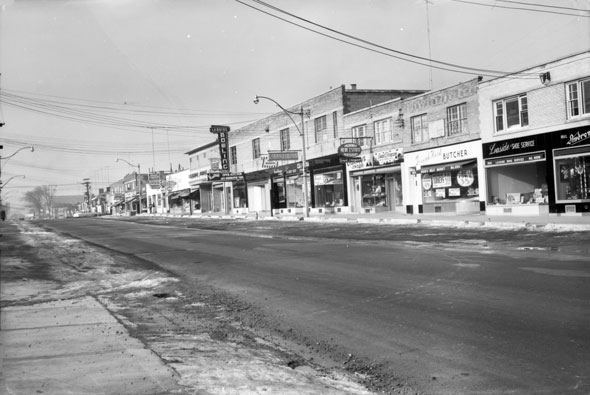
West from Laird on Eglinton in 1955. All these stores have since closed. The Leaside Bowling alley is now a Shoeless Joe's.
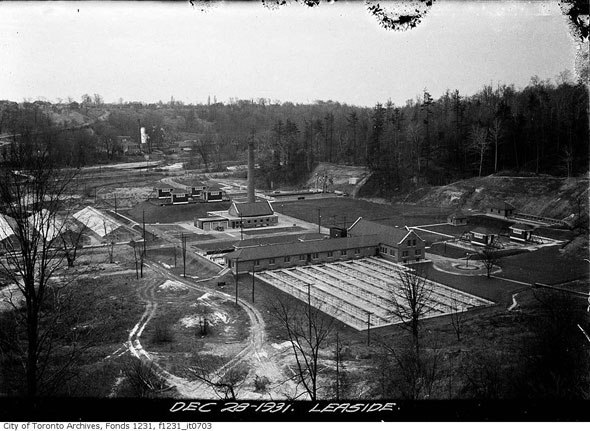
Leaside's sewage plant off Millwood in 1931. It's still in business as the North Toronto Wastewater Treatment Plant.
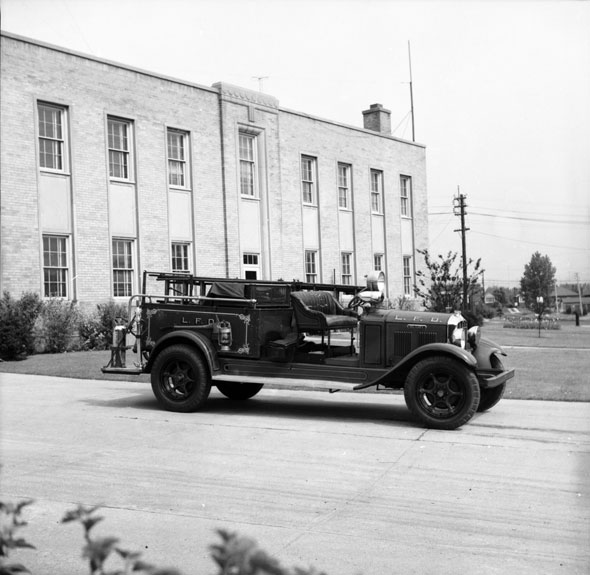
A pumper with the Leaside Fire Department outside the Leaside Municipal Building at McRae and Randolph in 1955. The building, completed in 1949 and used as Leaside's town hall for decades, is still standing. It was on the market in 2012 for $4.43 million.
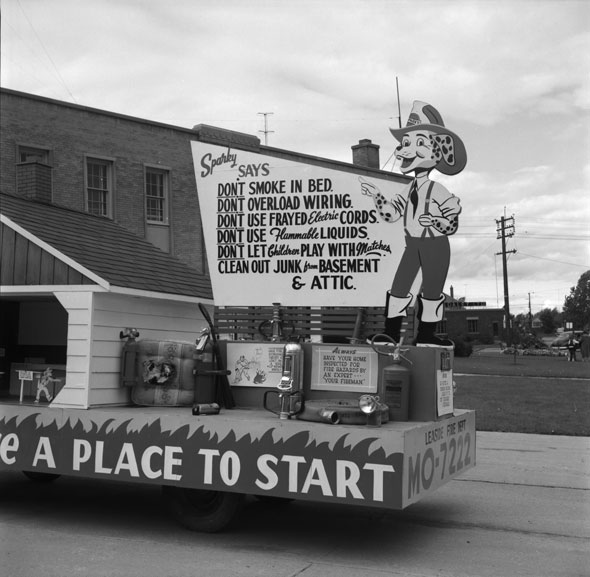
Safety promotion by the Leaside Fire Department. Don't smoke in bed!
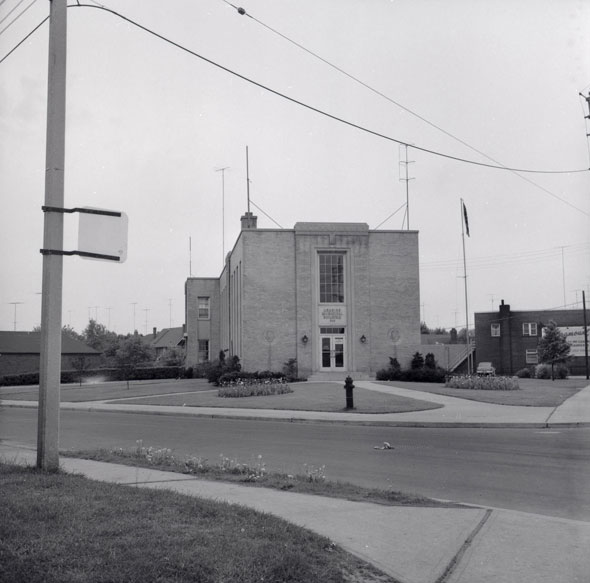
Another view of the Leaside Municipal Building. The same today.
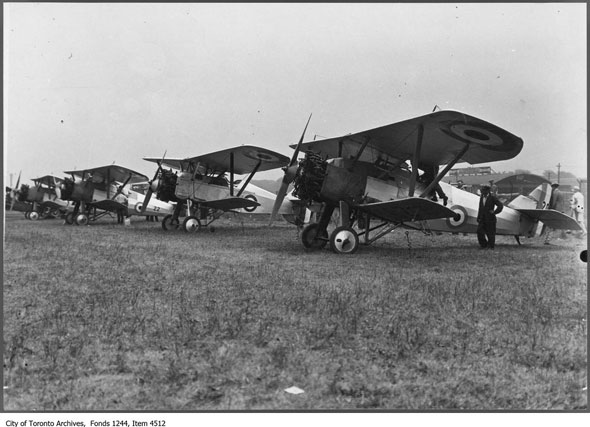
Leaside Aerodrome was founded during the first world war on a flat field northeast of Eglinton Wicksteed and Laird. It primarily served as a training facility for pilots, mechanics, and crews during the conflict. At its peak, the facility was home to nine hangars, instructional and repair buildings, and accommodation for more than a 1,000 troops.
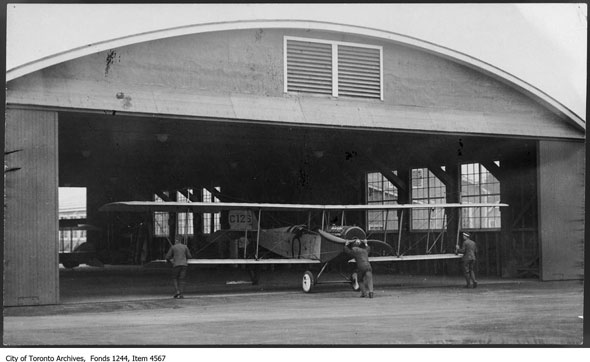
One of the hangars at Leaside Aerodrome in 1916.
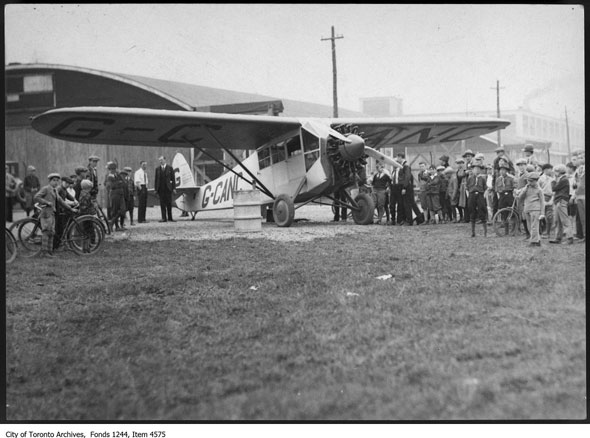
During the final year year of the war, the Leaside air field was the location of a Canadian first. On June 24, 1918, Captain Brian Peck flew about 120 specially marked letters from the Bois Franc Polo Grounds in Montreal to Leaside, in doing so becoming the first pilot in the country to deliver an air mail shipment.
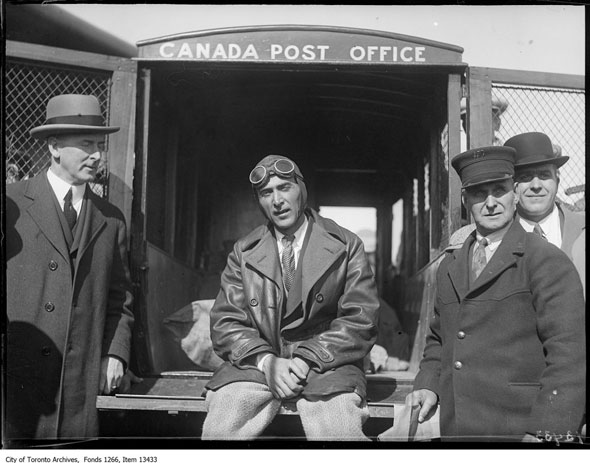
Peck's journey wasn't easy. His two-seater JN-4 Curtiss plane was jostled by persistent high winds and heavy rain, which forced stops in Kingston and Deseronto. The trip was organized by Aerial League of the British Empire as a demonstration of commercial aviation.
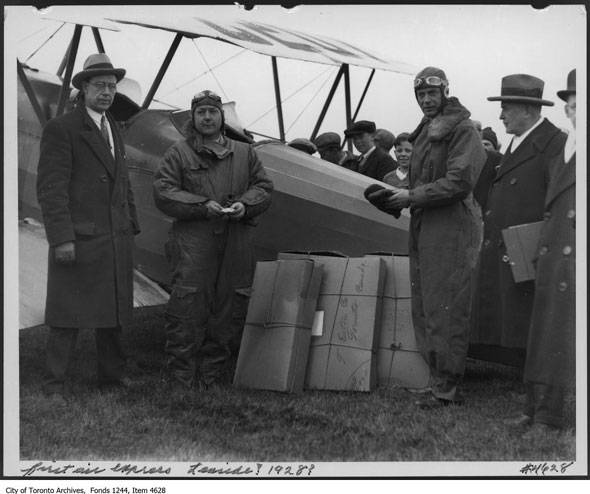
Leaside also took delivery of the first "air express" delivery in 1928, according to the caption of this photo.
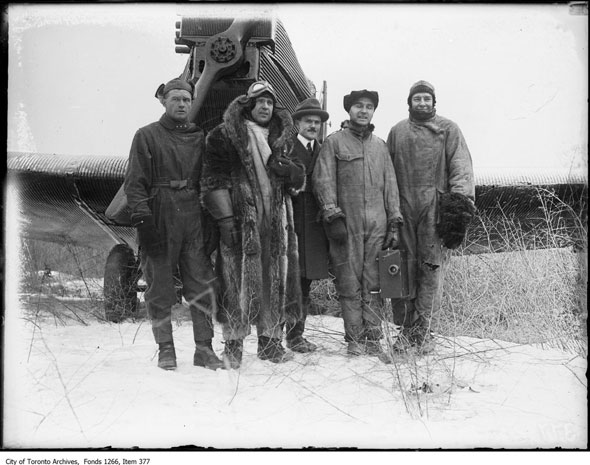
Flight in the 1920s was tough. Cold temperatures meant pilots had to wrap up warm. That's a camera one of flight crew is holding.
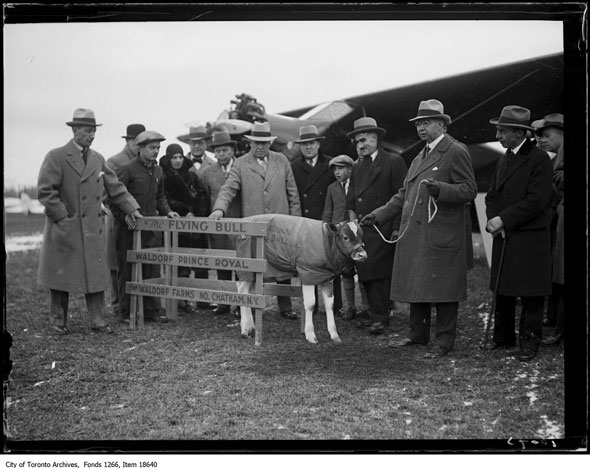
It's Waldorf Prince Royal the Flying Bull from Albany, NY. The little critter was flown to Toronto in November 1929 for the opening of the Royal Winter Fair. The man holding the leash is Oscar F. Kinney, Waldorf's former owner. He's handing in town to hand him over to new owner, Don Alda Farms.
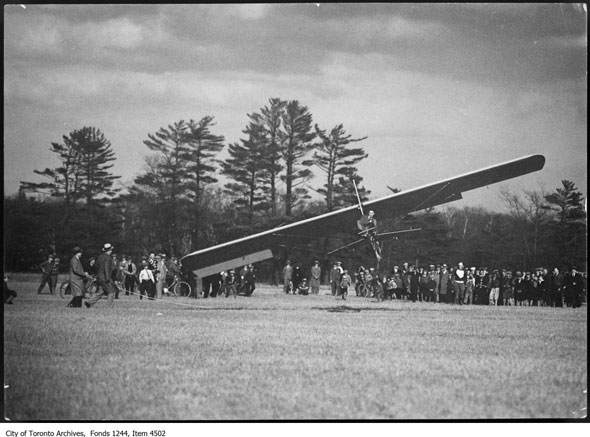
"Glider flight attempt," according to the caption, at Leaside Aerodrome circa. 1930. It's not clear how this terrifying ascent worked out.
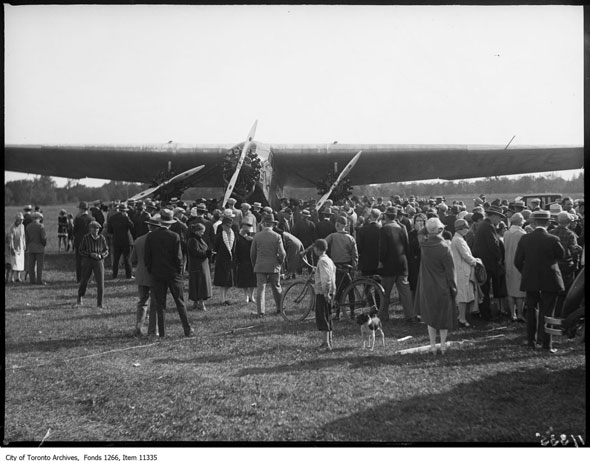
A gigantic U.S. Army Ford tri-motor airplane at Leaside in 1928.
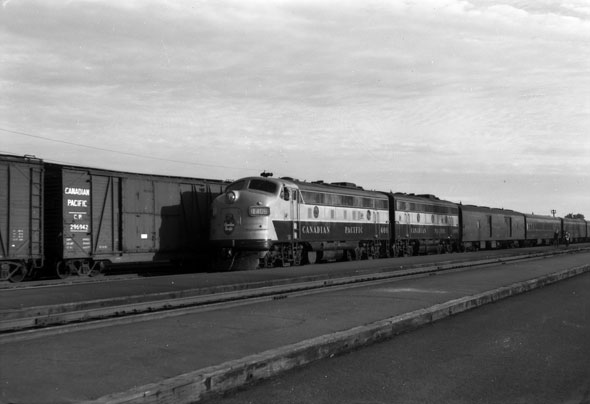
The Canadian Pacific station and yards were built on Leaside's southern border around 1884. The town was on the company's main passenger line between Toronto and Montreal until 1982, when service was finally withdrawn.
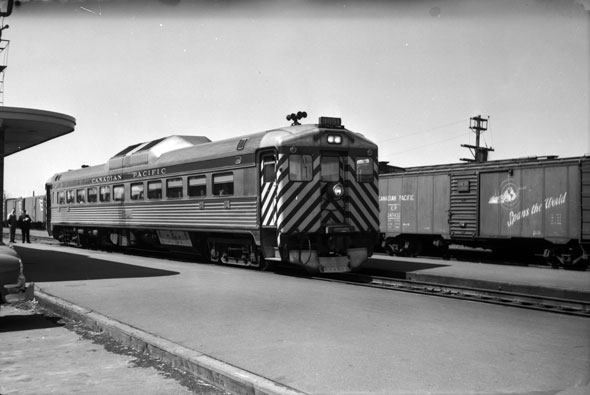
Today, the railways have minimal presence in Leaside. Even GO trains pass through the area without stopping.
Chris Bateman is a staff writer at blogTO. Follow him on Twitter at @chrisbateman.
Images: Toronto Public Library, City of Toronto Archives.
Latest Videos
Latest Videos
Join the conversation Load comments
